Часть 2.
В полдень, от центральной площади Хамедана в сторону Соборной мечети начинается движение процессии. Идут мужчины всех возрастов, идут подростки, в колясках везут инвалидов – все в чёрных, траурных рубашках. Отдельными группами идут участники с металлическими цепями-плётками, называемыми на фарси “Занжир Азадари” – “Цепи Траура”. Большая цепь для взрослого весит примерно 2 килограмма. У подростков и детей они полегче. Ритмично взмахивая, идущие наносят себе удары в область предплечий и спины. Удары доволно болезненные (испытал на себе). Тем самым выражается сопричастность к героизму и мученической гибели имама Хусейна (Да будет мир с ним!) и его верных друзей и соратников, павшим в сражении у Кербелы…

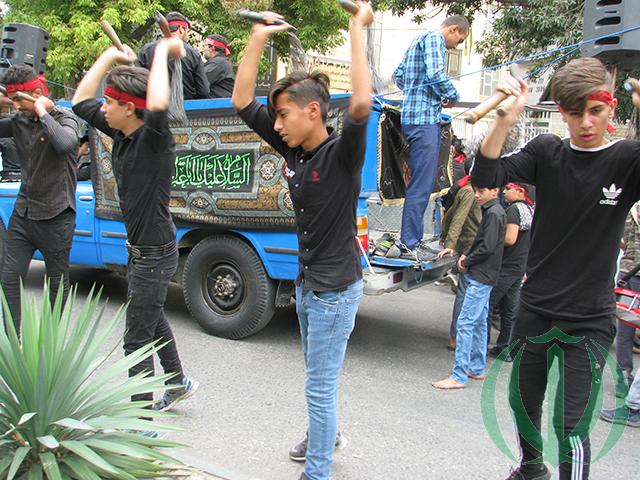
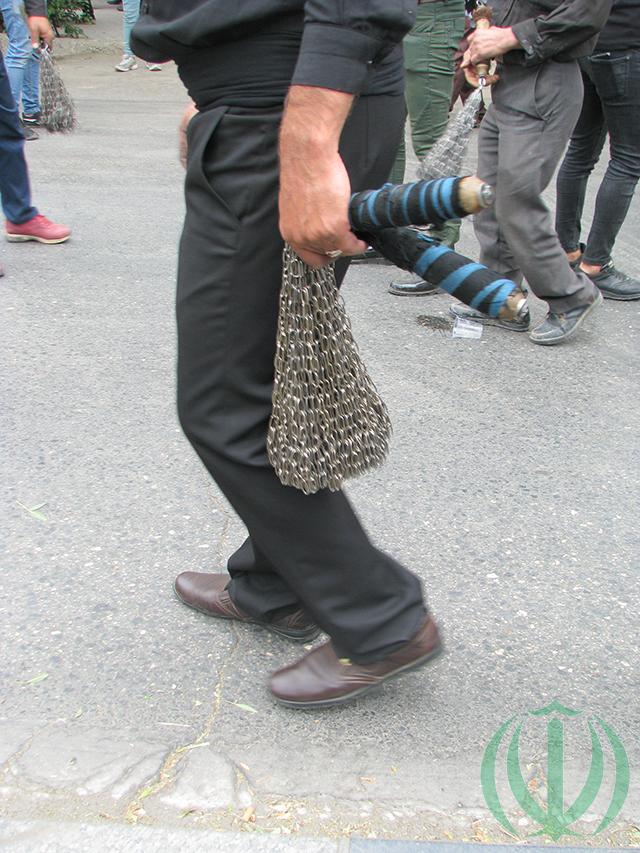

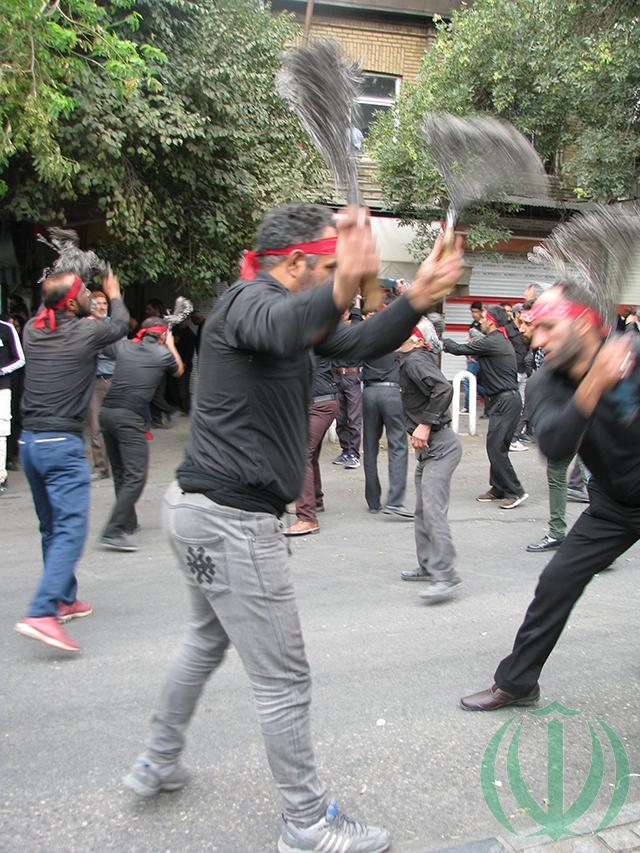 Участники процессии также несут траурные знамёна и транспоранты, их сопровождают барабанщики с барабанами разных размеров и звукоустановки. Ораторы рассказывают участникам и зрителям о героизме и самопожертвовании героев Кербелы, называя их поимённо. Особенно часто при этом здесь звучит имя Абул-ль-Фадл Аббаса…
Участники процессии также несут траурные знамёна и транспоранты, их сопровождают барабанщики с барабанами разных размеров и звукоустановки. Ораторы рассказывают участникам и зрителям о героизме и самопожертвовании героев Кербелы, называя их поимённо. Особенно часто при этом здесь звучит имя Абул-ль-Фадл Аббаса…
…2 октября 681 года (2 мухаррама 61 года хиджры) воинство Язида перекрыло доступ каравану имама Хусейна к реке Евфрат – единственному в той пустынной местности источнику воды. Через пять дней запасы воды в караване полностью закончились. Особенно тяжко страдали от жажды женщины и дети. Спасти погибающих детей взялся Абул-ль-Фадл Аббас. Ему удалось пробраться к реке и набрать воды в кожаные сосуды – бурдюки. На обратном пути его схватили враги и в наказание бросили умирать, отрубив руки. Теряя сознание, он вцепился зубами в единственный оставшийся бурдюк с водой и пополз в сторону каравана. Выпущенная стрела пронзила бурдюк, вода вытекла, а Абул-ль-Фадл Аббас умер, сжимая пустой бурдюк зубами …
…На месте гибели Абул-ль-Фадл Аббаса потомки возвели прекрасные мавзолей и мечеть… Прошли века, река Евфрат изменил своё течение – ныне она огибает мавзолей, напоминая нам о подвиге героя и о необходимости бороться с тиранией за свою свободу.

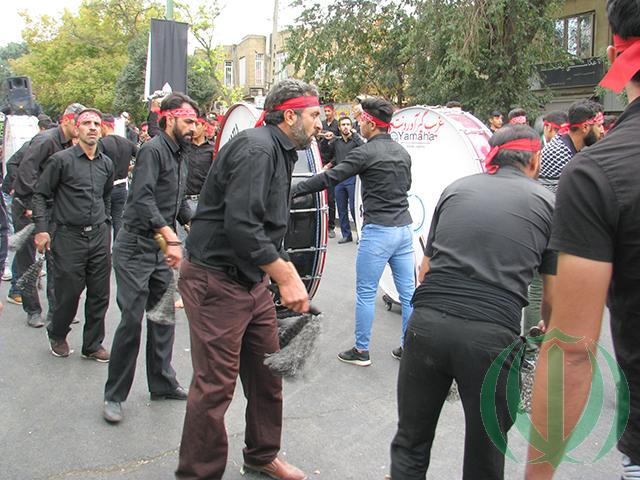
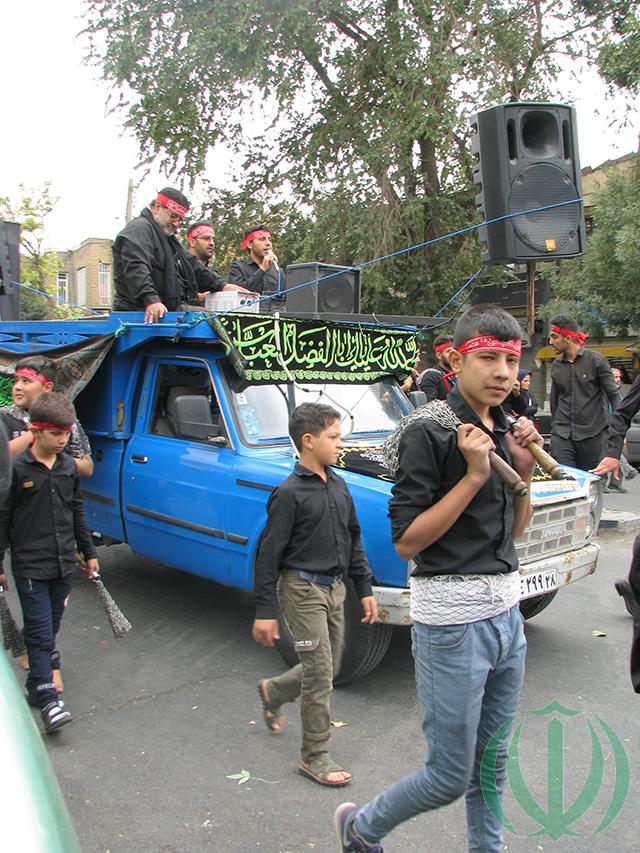

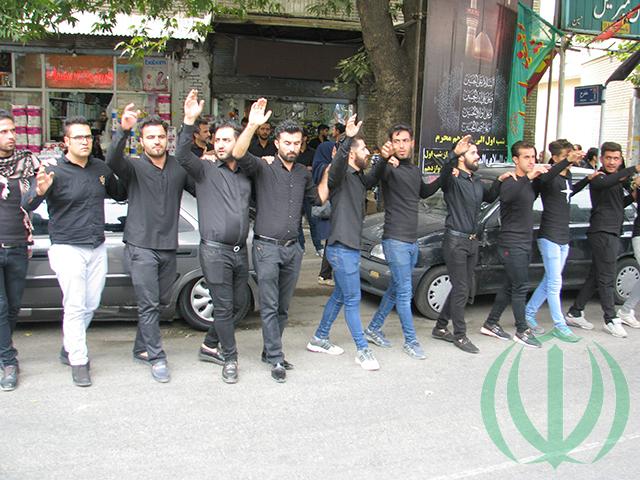 Всеобщий интерес вызывают костюмированные театральные постановки по мотивам жизни имама Хусейна. В них участвуют как профессиональные актеры, так и простые хамаданцы. Особенно красочна сцена встречи малочисленных сторонников имама Хусейна с множеством воинов Язида. Лицо артиста, представляющего имама Хусейна, по традиции должно быть закрыто плотной тканью. Ибо не может смертный повторить образ непорочного внука Пророка Ислама. Кто здесь есть кто – можно определить по цвету одежды: Хусейн и его воины одеты в зелёное, а враги – в иные цвета…
Всеобщий интерес вызывают костюмированные театральные постановки по мотивам жизни имама Хусейна. В них участвуют как профессиональные актеры, так и простые хамаданцы. Особенно красочна сцена встречи малочисленных сторонников имама Хусейна с множеством воинов Язида. Лицо артиста, представляющего имама Хусейна, по традиции должно быть закрыто плотной тканью. Ибо не может смертный повторить образ непорочного внука Пророка Ислама. Кто здесь есть кто – можно определить по цвету одежды: Хусейн и его воины одеты в зелёное, а враги – в иные цвета…

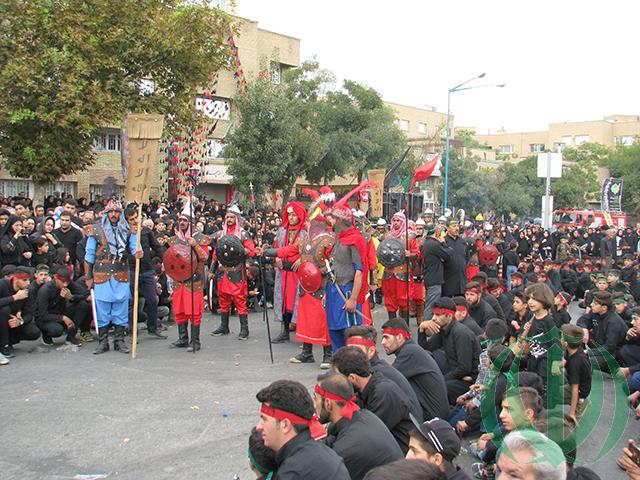
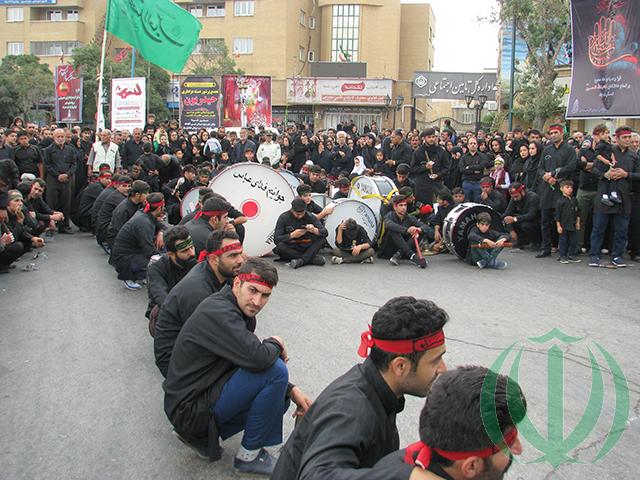
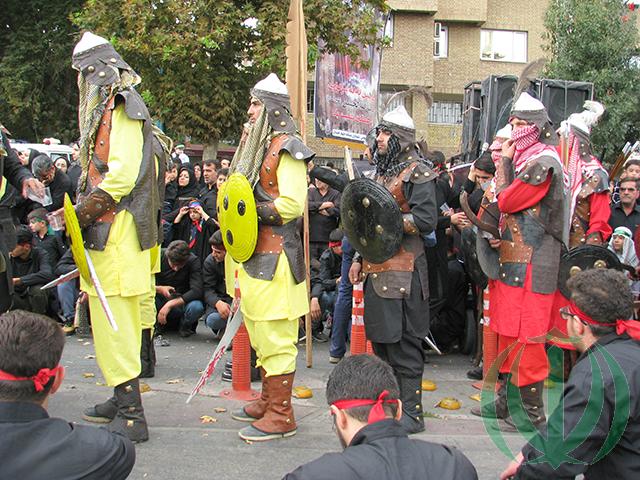
 Обряды в дни Тасуа и Ашура (обряды Мухаррама) выражают извечную борьбу истины против лжи и стремление человечества к свободе и против угнетения – во имя чего имам Хусейн пожертвовал своей жизнью…
Обряды в дни Тасуа и Ашура (обряды Мухаррама) выражают извечную борьбу истины против лжи и стремление человечества к свободе и против угнетения – во имя чего имам Хусейн пожертвовал своей жизнью…
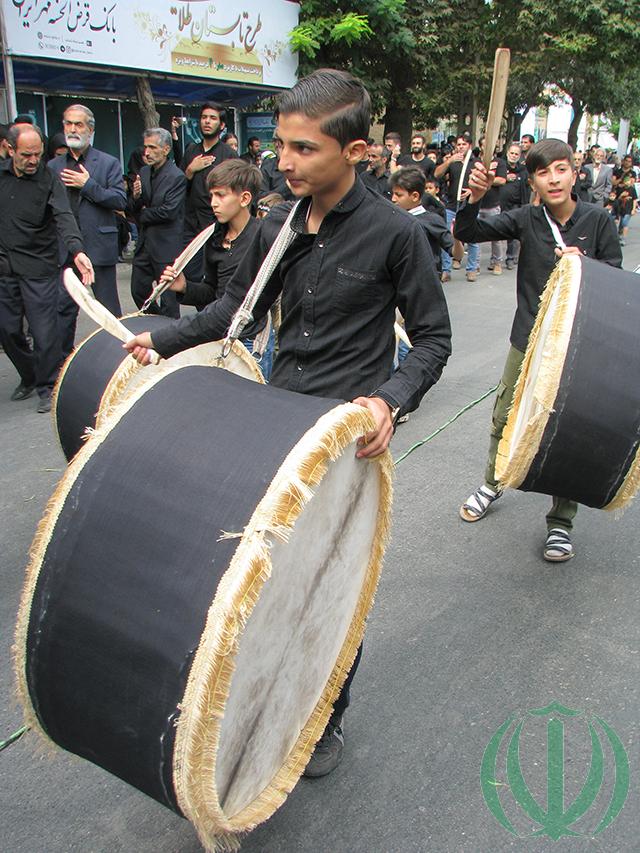
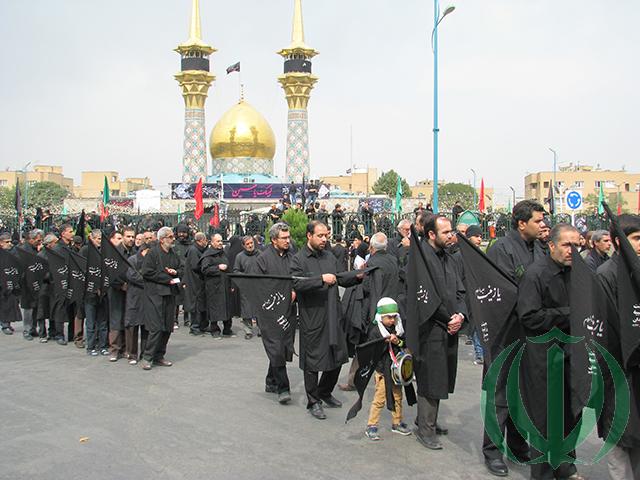

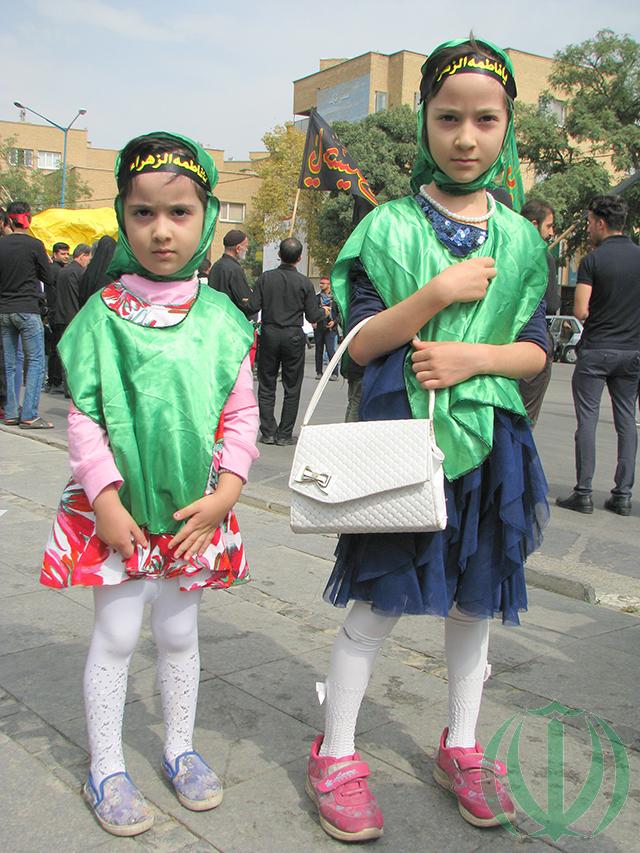
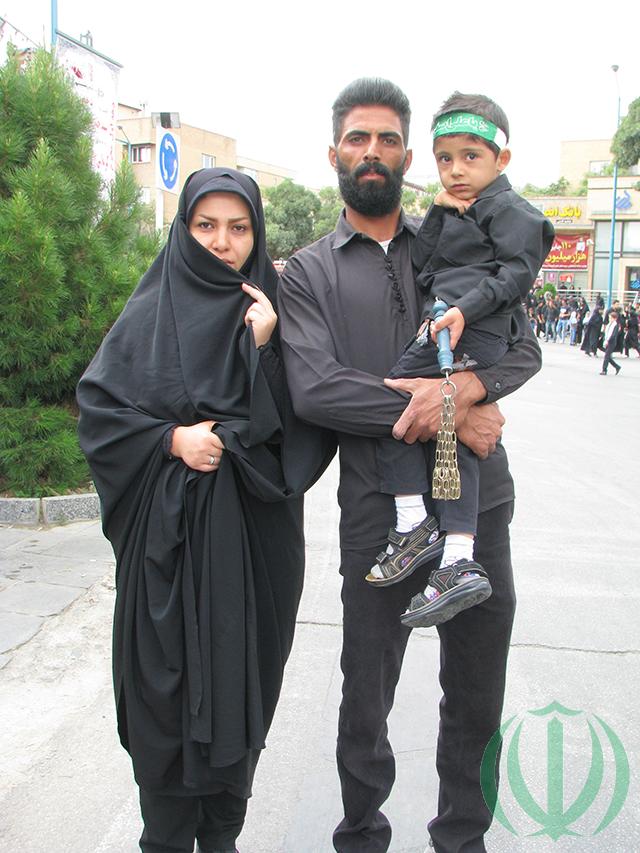
Tasua in Hamedan
Part 2.
At noon, the movement of the procession begins from the central square of Hamedan in the direction of the Cathedral Mosque. Men of all ages are walking, teenagers are walking, people with disabilities are being taken in wheelchairs – all in black, mourning shirts. Separate groups are participants with metal chains, whips, called in Farsi “Zanzhir Azadari” – “Chains of Mourning.” A large chain for an adult weighs approximately 2 kilograms. In adolescents and children, they are easier. Swinging rhythmically, the walkers strike themselves in the area of the forearm and back. The blows are quite painful (tested on myself). This expresses the involvement in the heroism and martyrdom of Imam Hussein (Peace be with him!) And his loyal friends and comrades who fell in the battle of Karbala …
Participants in the procession also carry mourning banners and transporants, accompanied by drummers with drums of different sizes and sound installation. The speakers tell the participants and spectators about the heroism and self-sacrifice of the heroes of Karbala, calling them by name. Especially often the name Abul-al-Fadl Abbas is heard here …
… On October 2, 681 (2 Muharram 61 AH), the army of Yazid blocked the caravan of Imam Hussein to the Euphrates River – the only water source in that desert area. After five days, the water supply in the caravan was completely over. Especially hard to suffer from thirst, women and children. To save the perishing children undertook Abul-al-Fadl Abbas. He managed to get to the river and draw water into the leather vessels – waterskins. On the way back, his enemies grabbed him and, in punishment, they left him for dead, cutting off his hands. Losing consciousness, he clutched his teeth in the only remaining waterskin and crawled toward the caravan. Released arrow pierced the waterskin, water flowed out, and Abul-al-Fadl Abbas died, clenching the empty waterskin with his teeth …
… At the site of the death of Abul-al-Fadl Abbas, the descendants erected beautiful mausoleums and mosques … Centuries passed, the Euphrates river changed its course – now it bends around the mausoleum, reminding us of the hero’s heroic deed and the need to fight tyranny for his freedom.
There is a general interest in costumed theatrical productions based on the life of Imam Hussein. They involve both professional actors and ordinary Hamadans. Particularly colorful is the scene of the meeting of small supporters of Imam Hussein with many Yazid warriors. The face of the artist representing Imam Hussein, according to tradition, must be covered with a thick cloth. For a mortal cannot repeat the image of the immaculate grandson of the Prophet of Islam. Who is who here – can be identified by the color of the clothes: Hussein and his warriors are dressed in green, and the enemies – in other colors …
The ceremonies in the days of Thassoua and Ashura (the ceremonies of Muharram) express the eternal struggle of truth against lies and the human desire for freedom and oppression – for the sake of which Imam Hussein sacrificed his life …
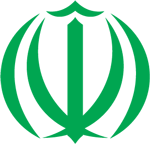


0 Comments